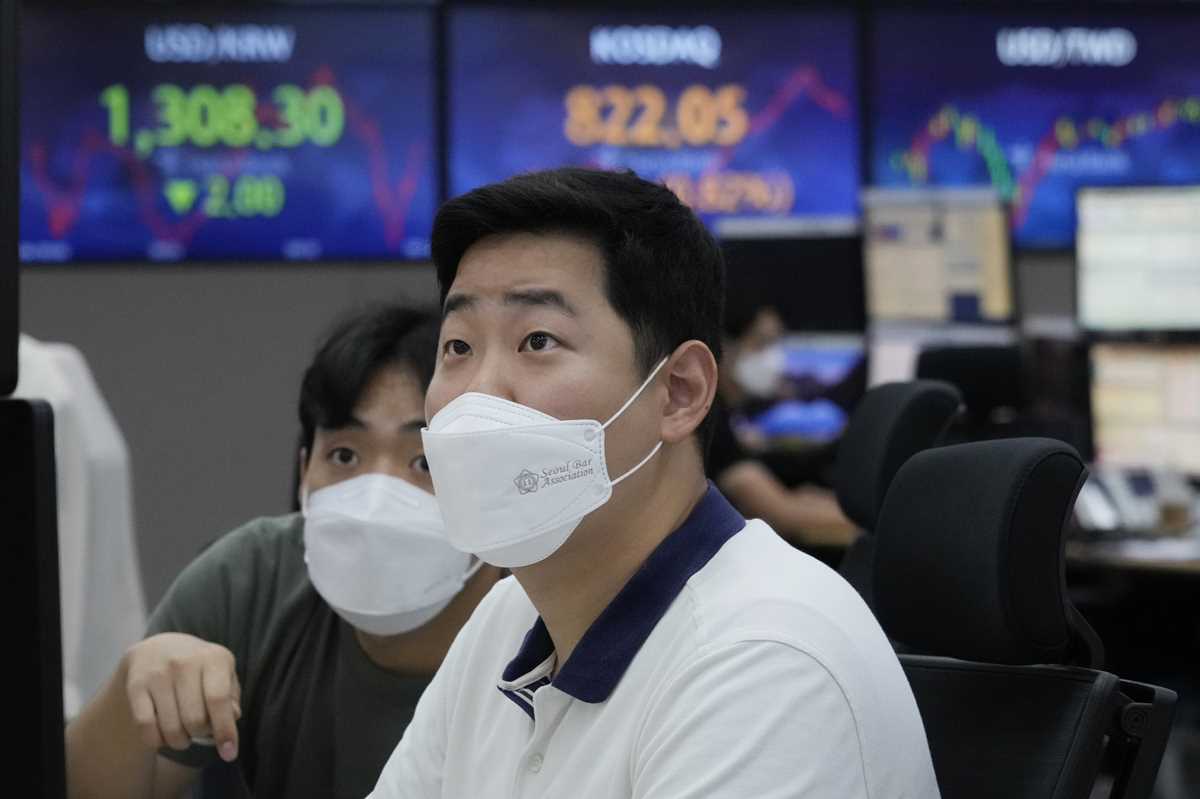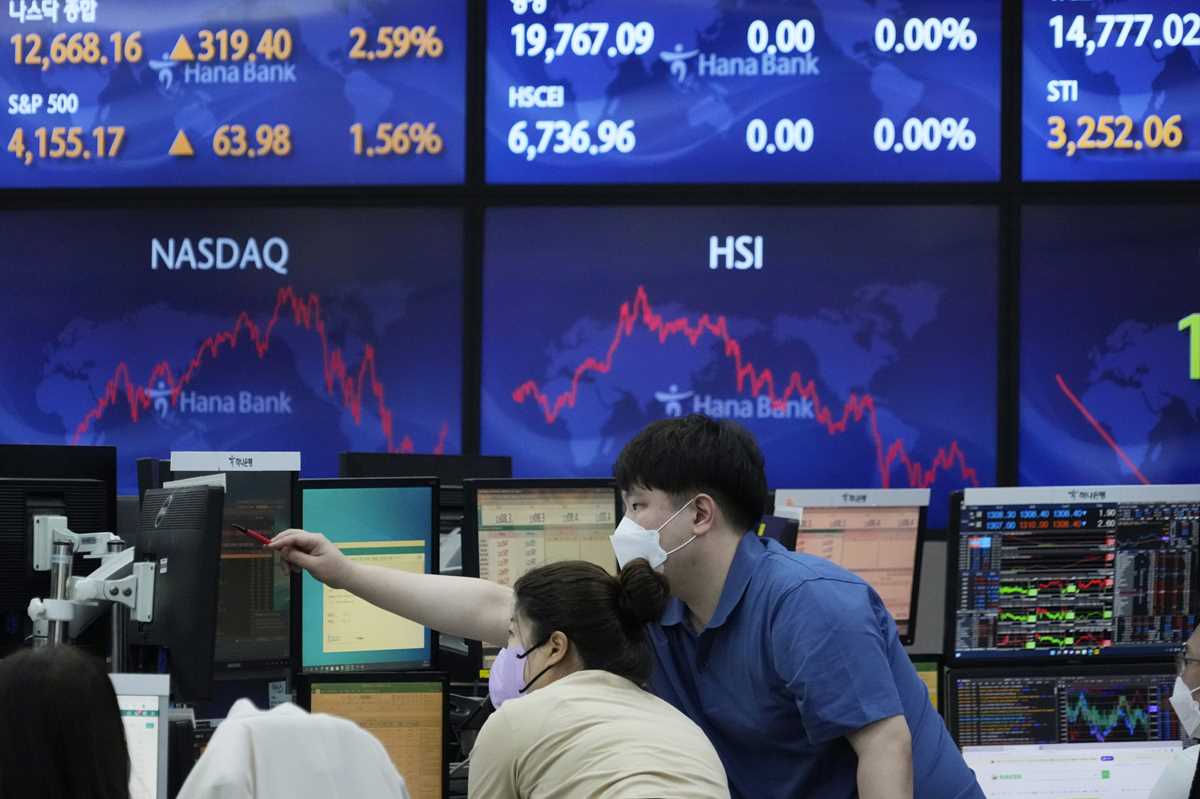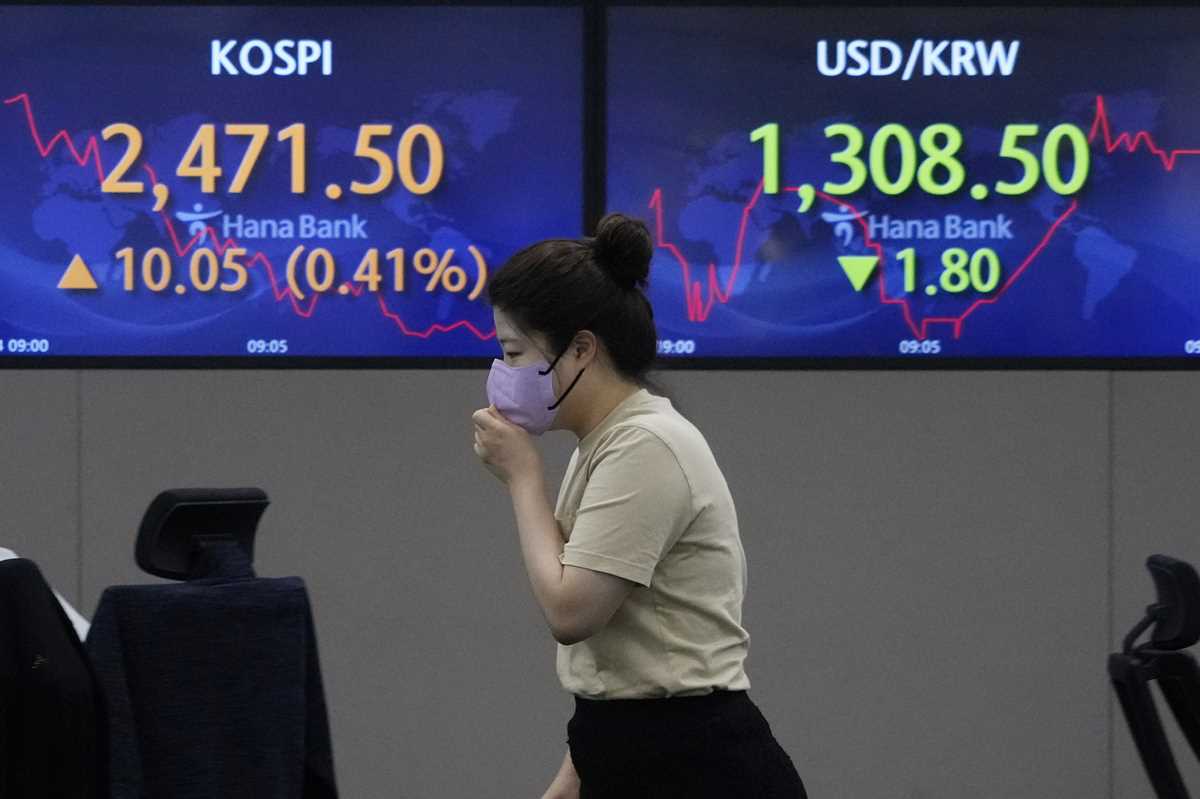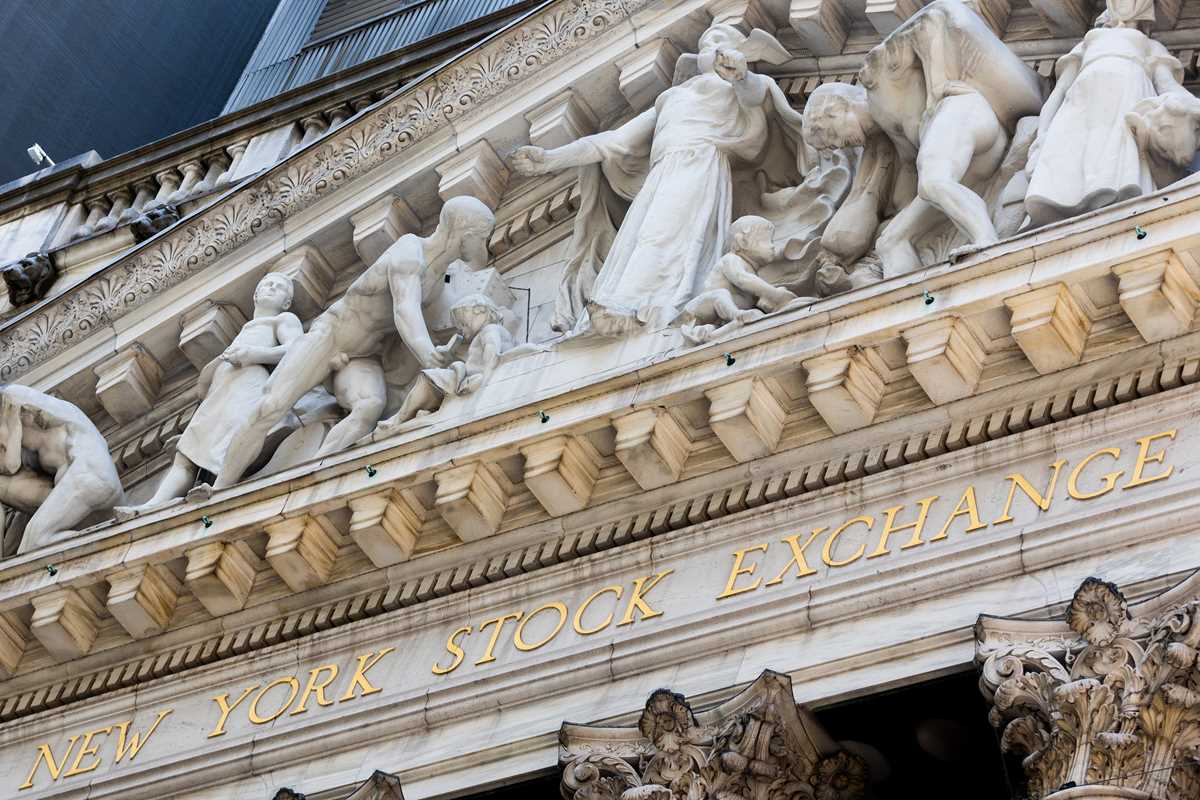 Currency traders watch monitors at the foreign exchange dealing room of the KEB Hana Bank headquarters in Seoul, South Korea, Thursday, Aug. 4, 2022. Asian shares mostly rose Thursday as investors welcomed encouraging economic data and quarterly earnings reports from big companies. (AP Photo/Ahn Young-joon)
Currency traders watch monitors at the foreign exchange dealing room of the KEB Hana Bank headquarters in Seoul, South Korea, Thursday, Aug. 4, 2022. Asian shares mostly rose Thursday as investors welcomed encouraging economic data and quarterly earnings reports from big companies. (AP Photo/Ahn Young-joon) Currency traders watch monitors at the foreign exchange dealing room of the KEB Hana Bank headquarters in Seoul, South Korea, Thursday, Aug. 4, 2022. Asian shares mostly rose Thursday as investors welcomed encouraging economic data and quarterly earnings reports from big companies. (AP Photo/Ahn Young-joon)
Currency traders watch monitors at the foreign exchange dealing room of the KEB Hana Bank headquarters in Seoul, South Korea, Thursday, Aug. 4, 2022. Asian shares mostly rose Thursday as investors welcomed encouraging economic data and quarterly earnings reports from big companies. (AP Photo/Ahn Young-joon) A currency trader passes by screens showing the Korea Composite Stock Price Index (KOSPI), left, and the exchange rate of South Korean won against the U.S. dollar at the foreign exchange dealing room of the KEB Hana Bank headquarters in Seoul, South Korea, Thursday, Aug. 4, 2022. Asian shares mostly rose Thursday as investors welcomed encouraging economic data and quarterly earnings reports from big companies. (AP Photo/Ahn Young-joon)
A currency trader passes by screens showing the Korea Composite Stock Price Index (KOSPI), left, and the exchange rate of South Korean won against the U.S. dollar at the foreign exchange dealing room of the KEB Hana Bank headquarters in Seoul, South Korea, Thursday, Aug. 4, 2022. Asian shares mostly rose Thursday as investors welcomed encouraging economic data and quarterly earnings reports from big companies. (AP Photo/Ahn Young-joon) People walk past the New York Stock Exchange, Wednesday, Aug. 3, 2022, in New York. (AP Photo/Julia Nikhinson)
People walk past the New York Stock Exchange, Wednesday, Aug. 3, 2022, in New York. (AP Photo/Julia Nikhinson) A detail of the exterior of The New York Stock Exchange, on Wednesday, Aug. 3, 2022, in New York. (AP Photo/Julia Nikhinson)
A detail of the exterior of The New York Stock Exchange, on Wednesday, Aug. 3, 2022, in New York. (AP Photo/Julia Nikhinson) The New York Stock Exchange, Wednesday, Aug. 3, 2022, in New York. (AP Photo/Julia Nikhinson)
The New York Stock Exchange, Wednesday, Aug. 3, 2022, in New York. (AP Photo/Julia Nikhinson)TOKYO (AP) — Global shares were mostly higher Thursday as investors welcomed encouraging economic data and quarterly earnings reports from big companies.
European shares mostly headed higher in early trading. Benchmarks advanced in Asia as jitters eased over U.S. House Speaker Nancy Pelosi’s visit to Taiwan. The gains followed a strong rally on Wall Street.
France's CAC 40 added 0.5% in early trading to 6,501.54, while Germany's DAX gained 0.7% to 13,688.05. Britain's FTSE 100 fell 0.3% to 7,426.95. The future for the Dow industrials inched up less than 0.1% while that for the S&P 500 also was little changed, up by less than 0.1%.
Analysts said geopolitical risks remained after Pelosi's visit to Taiwan in defiance of Beijing, with China conducting military exercises near the self-ruled island that it claims as its own territory.
“Despite the easing in immediate concerns, investors will be looking out for any potential escalation in U.S.-China tensions, with any economic sanctions from China likely to negatively affect risk sentiment and positioning in Asian markets,” said Anderson Alves of ActivTrades.
Alves said investors are also watching U.S. nonfarm payrolls, due Friday, for indications on hiring, and how that might affect interest rate policy. But overall, Pelosi's trip so far has had little impact on markets. She was visiting Seoul on Thursday and would then head to Japan.
Japan's benchmark Nikkei 225 added 0.7% to finish at 27,932.20. Australia's S&P/ASX 200 lost earlier gains, shedding just 1 point to 6,974.90. South Korea's Kospi added 0.5% to 2,473.11. Hong Kong's Hang Seng rose 2.1% to 20,174.04, while the Shanghai Composite climbed 0.8% to 3,189.04.
India's Sensex lost 0.6% and the Taiex in Taiwan also fell 0.5%.
Earnings remain in focus this week as investors parse the latest results and statements from companies to better understand how inflation is affecting businesses and consumers.
Oil prices rose following OPEC's decision to boost production in September at a much slower pace than previous months. Benchmark U.S. crude added 50 cents to $91.16 a barrel. On Wednesday, U.S. crude oil fell 4% to settle at $90.66 per barrel. Brent crude, the international standard, added 29 cents to $97.07 a barrel.
Upcoming data on the U.S. jobs market could help investors determine how the Federal Reserve will move ahead with its interest rate policy, which has been aggressive in an effort to try and tame inflation. U.S. jobless claims numbers for last week will be released Thursday.
In currency trading, the U.S. dollar edged up to 134.24 Japanese yen from 133.85 yen. The euro cost $1.0166, little changed from $1.0170.
___
Yuri Kageyama is on Twitter https://twitter.com/yurikageyama
Before you make your next trade, you'll want to hear this.
MarketBeat keeps track of Wall Street's top-rated and best performing research analysts and the stocks they recommend to their clients on a daily basis.
Our team has identified the five stocks that top analysts are quietly whispering to their clients to buy now before the broader market catches on... and none of the big name stocks were on the list.
They believe these five stocks are the five best companies for investors to buy now...
See The Five Stocks Here
Wondering when you'll finally be able to invest in SpaceX, StarLink, or The Boring Company? Click the link below to learn when Elon Musk will let these companies finally IPO.
Get This Free Report
